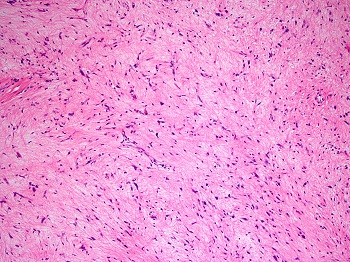Diagnosis
Bone and soft tissue cancers are relatively rare. They also raise special concerns for patients. While beating cancer is always the first priority, many patients are also worried that they may lose a limb as a result of their cancer.
For these reasons and many others, it is important to find a center with doctors who treat bone and soft tissue cancers frequently and almost exclusively.
Wilmot Cancer Institute offers the region’s only doctors who specialize in bone and soft tissue cancers. Our doctors have fellowship training in orthopaedic oncology — the treatment of bone and soft tissue cancers. They see more patients with orthopaedic cancers than any other center in Upstate New York.
Wilmot is also part of the University of Rochester Medical Center, one of the country’s top centers for orthopaedic research. This helps ensure that our doctors have the most current knowledge about all types of orthopaedic conditions.
Signs and symptoms
Bone cancers
The most common symptom of bone cancer is pain. The pain may initially be occasional and then become more frequent. Other symptoms of bone cancer include:
- Swelling. Depending on the location of the tumor, a lump or mass may be felt.
- Fractures.
- Numbness, tingling or weakness if the cancer affects the bones of the spine.
Soft tissue cancers
Often, the first sign of a soft tissue sarcoma is a lump under the skin that may or may not be painful. Soft tissue cancers most often begin in an arm or leg, but they can also occur in the abdomen, chest, or in the head and neck area.
Diagnosis
Getting an accurate diagnosis is essential to getting the best treatment. Diagnosing bone and soft tissue cancers can include:
Medical history and physical examination: This first step includes a complete medical history and assessment of any symptoms such as pain, swelling or new lumps that have developed under the skin.

Imaging: Imaging tests are used to learn more about the location, type and extent of bone and soft tissue cancers. Wilmot Cancer Institute offers state-of-the-art imaging technology such as PET scans, CT scans, and MRI for diagnosing bone and soft tissue sarcomas.
Biopsy: A biopsy involves removing cells or tissue for further examination by a pathologist. Wilmot has a specialized musculoskeletal radiology team for minimally invasive image-guided biopsies. Wilmot Cancer Institute also offers:
- Needle biopsies, which use a needle-like instrument to remove a sample of tissue from the tumor.
- Open biopsies, in which a surgeon cuts through the skin to remove a piece of tissue or the entire tumor, if it is small.
Pathology: At Wilmot, specialized pathologists who focus on bone and soft tissue cancers analyze the tissue samples taken during a biopsy. These pathologists examine bone and soft tissue samples almost exclusively, so they are better able to provide an accurate diagnosis.